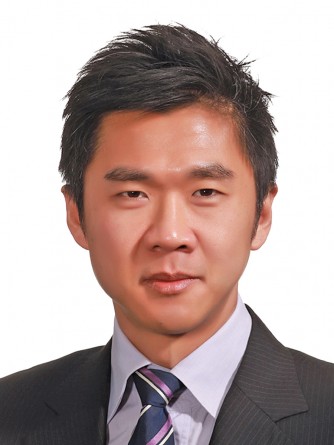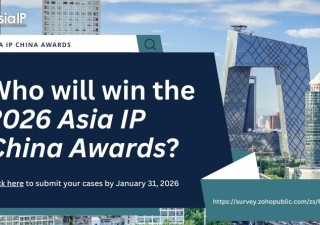Asia features prominently in Baker McKenzie’s luxury and fashion Global Legal Guide
31 July 2019

“The APAC region has some of the fastest- and highest-growing economies in the world. The luxury and fashion clients tend to invest a lot of resources in the region in order to safeguard their brand names and market shares." – Andrew Sim, partner, Baker McKenzie, Beijing
Global law firm Baker McKenzie has released the 2019 edition of its Global Legal Guide for Luxury & Fashion Companies.
Launched in 2015, the Global Legal Guide was written by around 235 practitioners from the firm including intellectual property or IP attorneys.
The guide dives immediately into the topic of IP in the luxury and fashion world which has jumped from being a US$254 billion industry in 2016 to a US$300 billion earner worldwide in 2019.
Chapter 1 – Identifying, Registering, Enforcing and Monetizing IP Assets – and chapter 2 –Elements of Enforcement for Infringement in the Online and Offline Landscapes – both put an emphasis on Australia, China, Japan, Hong Kong and Singapore among Asia Pacific countries. Chapter 2, in particular, discusses infringement and counterfeiting trends, enforcement strategies, obstacles to enforcement and the like which are specific to each country. These include infringement on stand-alone websites, and infringement via social media and keyword advertising in China; online auction platforms and e-commerce in Hong Kong; and the uniform domain name resolution policy/ uniform rapid suspension in Singapore.
“These APAC territories were selected as they represent important markets for luxury and fashion companies,” says Andrew Sim, a partner at Baker McKenzie in Beijing. “In addition, China has an active counterfeit good industry and it will be crucial for brand owners to have an understanding of the civil procedure so that they can make best use of them when they, for example, file civil actions against the Chinese counterfeiters.”
The same chapters also deal with IP environments in the European Union, United Kingdom, France, Germany, Italy, Spain, Russia, United States, Canada, Mexico, Argentina, Brazil and Colombia.
Hong Kong and China are further tackled in Chapter 5, with discussions on the use of trademarks and the takedown requests on Alibaba and Taobao/ Tmall, among others.
Sim says that from his experience with clients, he has observed that IP awareness among the region’s luxury and fashion industry players tends to be very high.
“This is because the APAC region has some of the fastest and highest growing economies in the world and, therefore, there is a strong demand for luxury and fashion products among the fastrising middle-class populations in these countries and territories. As such, the luxury and fashion clients tend to invest a lot of resources in the APAC region in order to safeguard their brand names and market shares,” Sim explains.
He says that some of these companies have regional and/ or country IP counsel or brand managers based in different countries in the region, particularly in Hong Kong, Singapore and Shanghai.
“You always learn from your clients,” says Marc M. Levey, a partner at Baker McKenzie in New York and editor of the Global Legal Guide for Luxury & Fashion Companies. “But when you work in and study this industry globally and with the vast client base of Baker McKenzie, you see the industry at all levels and in all jurisdictions. As we experienced when we had regional and global meeting of the luxury and fashion industry group from its earliest formative years, the level and detail of experiences and knowledge was daunting,” he says. “This got the idea started, and over 235 Baker McKenzie professionals participated in the preparation of the initial guide as well as the recent update.”
The guide is updated annually to include additional chapters and new developments or trends that emerge. One of these may be blockchain technology.
According to Sim, the law firm may consider including guidelines for companies using the technology in future editions.
Blockchain has been proven to have applications beyond the fintech sector, but more and more firms outside the fintech space, including global luxury and fashion brands, have started to use the technology. Their purposes vary: tracking their products, efficient supply chain management, increased security, preventing counterfeiting and for authentication.
De Beers is using blockchain in order to trace its diamonds through their lifecycle – from the mine to the jewelry store.
LVMH, owner of the Louis Vuitton and Parfums Christian Dior brands, is now also using blockchain to enable customers to trace a product from its design phase right up to the distribution stage.
Ailsa Bay, a leading Scotch whisky brand, has also started on a blockchain project to help address the problem of liquor counterfeiting in the UK. This problem has caused the country to lose around £218 million (US$ 276.8 million) a year, according to a report by The Drinks Business, a monthly international B2B magazine and website.
In Asia, Chinese fashion label Babyghost turned to blockchain as early as 2016 when it started to use the technology for quality assurance, product safety and authenticity. The company placed digital chips into clothing items and QR barcodes to product labels to allow a consumer to access data about the clothing and learn if the item is safe, of high quality and authentic.
“The adoption and usage of the technology by fashion and luxury companies [in the region] is still in its very early stage and we will probably have a clearer idea on the challenges posed by such usage in the future,” says Sim. “But one possible challenge is on how to ensure that the information that is entered into the blockchain database is true and accurate.”
Espie Angelica A. de Leon






